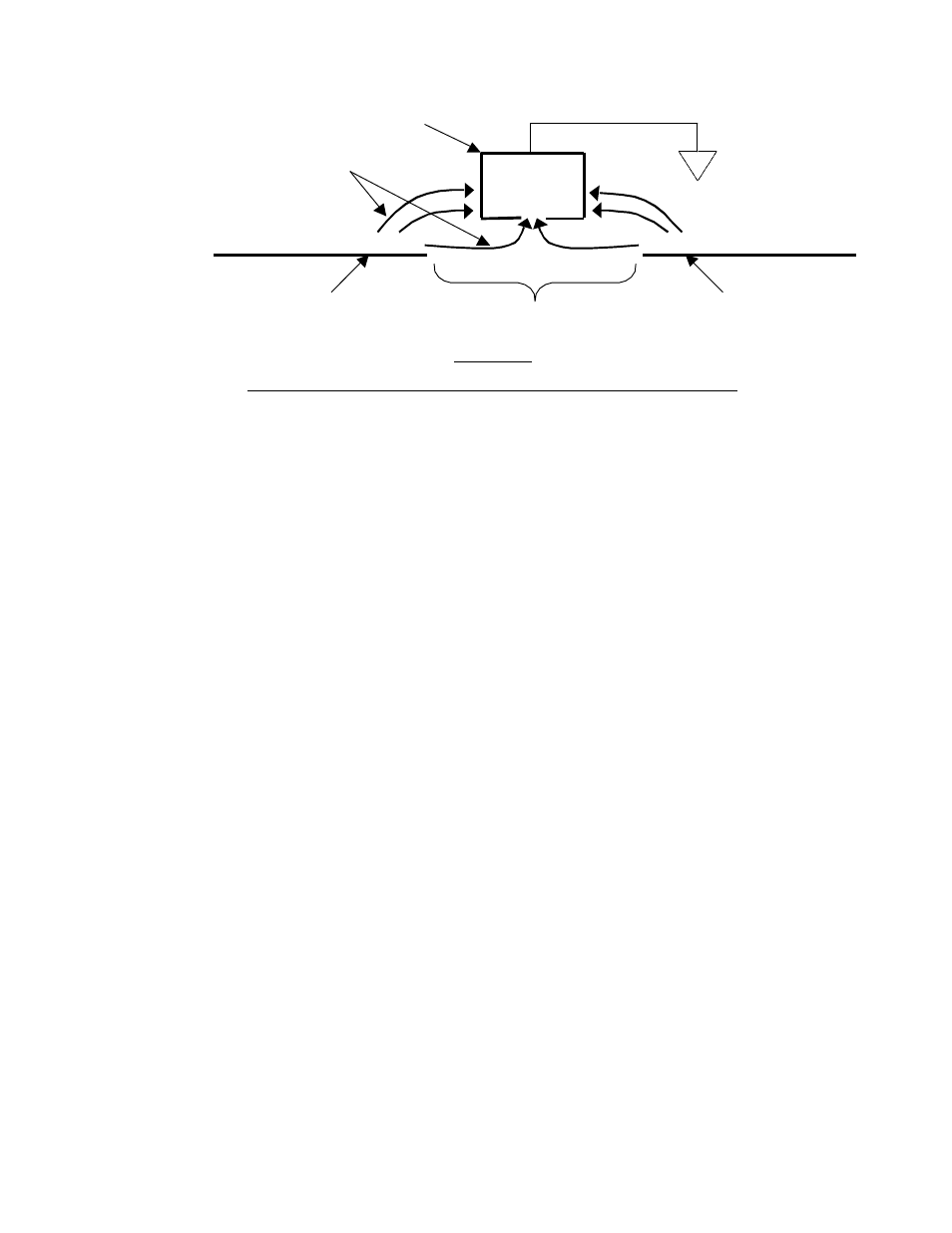Monroe Electronics Electrostatic Fieldmeter - Static Monitor - model 177A User Manual
Page 67

APNE-0016
66
Figure II-4
Insulating Sheet Electric Field Demo, Front View of Figure II-3(b)
Effect of Probe Type On Fieldmeter Readings
For measurement of insulating web surfaces, it is best to maintain the same distance from
the fieldmeter to the web as when the fieldmeter was calibrated. Since most fieldmeters are
calibrated at one inch, their apertures should be positioned one inch from the web while
measurements are taken. Accurate readings can be obtained using the Monroe Electronics
265A and 282A handheld fieldmeters as-is, provided the web is wide enough and there are
no nearby grounds or other charged surfaces to influence the electric field.
The situation is more complex for the Monroe Electronics Models 257D and 177A
fieldmeters, which both use the Model 1036 probes[3]. The Model 1036 probes are
primarily used for permanent installations once the high-field locations have been
determined using one of the handheld meters. The Model 1036E probe will give accurate
readings (as-is) at a measurement distance of one inch because its large grounded face
helps to create a uniform electric field near the aperture of the probe.
The Model 1036F probe is significantly smaller than the Model 1036E probe. Unless a
grounded shroud is used to enlarge the smaller ground plane of the 1036F probe, the
fieldmeter readings will be about 12% high because the electric field will converge on the
small probe[3]
Insulating Sheet
+ + + + + + + + + + +
+ + + + + + + + + + +
Ground
- -
- - -
- -
- - -
Perpendicular
Field Lines
Probe
Insulating Sheet
Hole